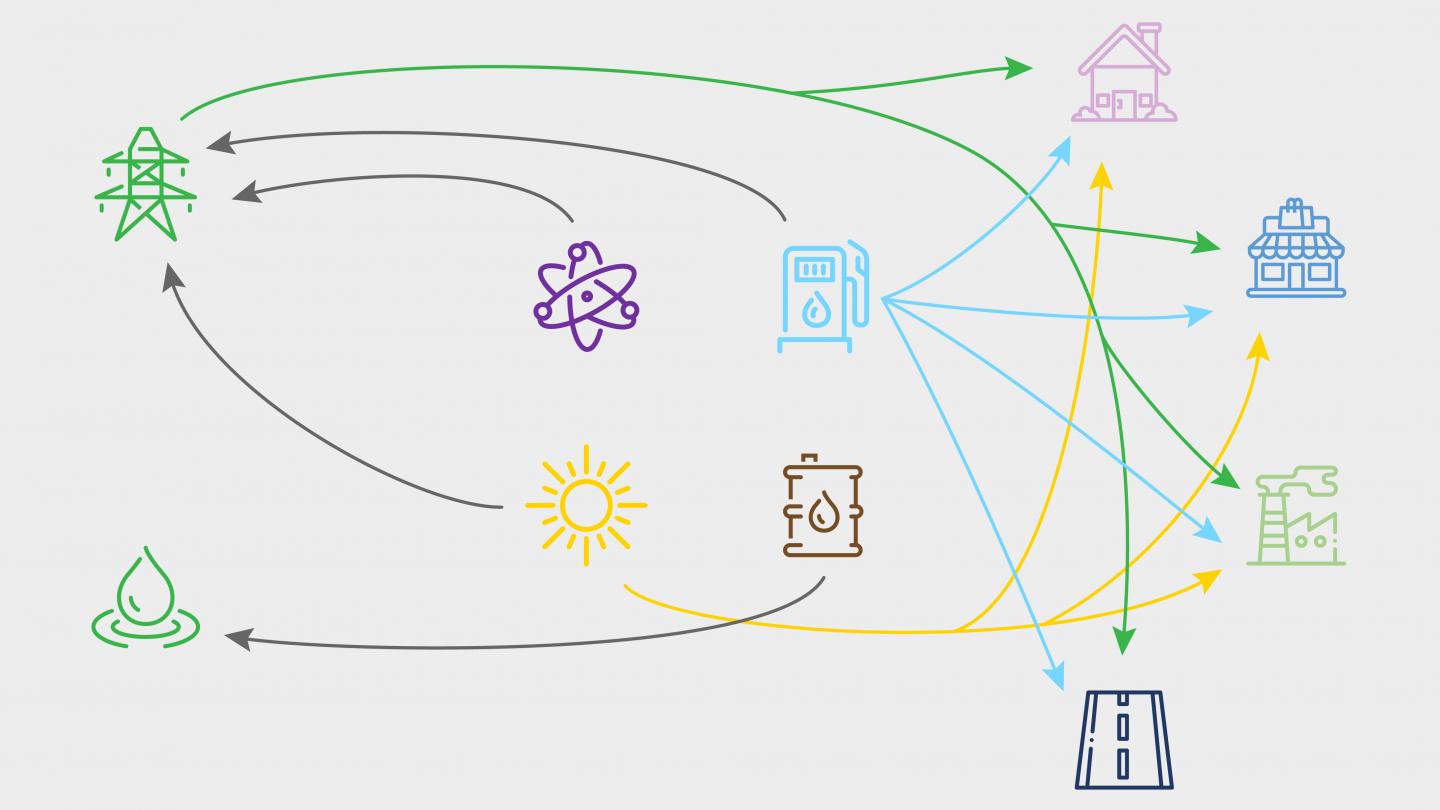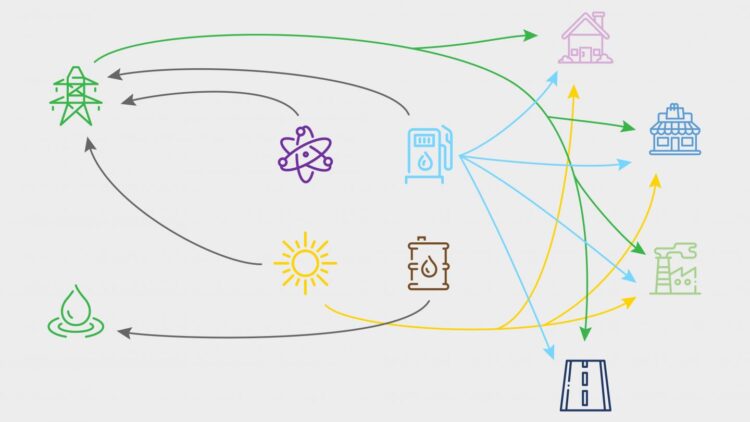New metric can calculate and forecast the average price of the energy in the United States

Credit: Rachel Barton/Texas A&M Engineering
Since the early industrial revolution in the mid-1700s, fossil fuels have acquired an ever-growing footprint in energy production. However, the environmental concerns of fossil fuels use and their inevitable depletion have led to a global shift toward renewable energy sources. These transitions, however, raise questions about the best choice of renewables and the impact of investing in these resources on consumer cost.
In a recent study published in the journal Nature Communications, researchers at Texas A&M University have devised a metric that reflects the average price of energy in the United States. Much like how the Dow index indicates trends in stock market prices, the researchers’ metric reflects the changes in energy prices resulting from the type of energy sources available and their supply chains.
“Energy is affected by all kinds of events, including political developments, technological breakthroughs and other happenings going on at a global scale,” said Stefanos Baratsas, a graduate student in the Artie McFerrin Department of Chemical Engineering at Texas A&M and the lead author on the study. “It’s crucial to understand the price of energy across the energy landscape along with its supply and demand. We came up with one number that reflects exactly that. In other words, our metric monitors the price of energy as a whole on a monthly basis.”
Today, the energy industry is largely dominated by fossil fuels, like coal, natural gas and petroleum. An increase in fossil fuel consumption, particularly in the last few decades, has raised increasing concerns about their environmental impact. Most notably, the Intergovernmental Panel on Climate Change has reported an estimated increase at 0.2 degrees Celsius per decade in global temperature, which is directly linked to burning fossil fuels.
But only around a 11% share of the total energy landscape comes from renewable sources. Although many countries, including the United States, have committed to using more renewable energy sources, there isn’t a way to quantitatively and accurately measure the price of energy as a whole. For example, an establishment might use a combination of solar and fossil fuels for various purposes, including heating, power and transportation. In this case, it is unclear how the price would change if there is an increased tax on fossil fuels or subsidies in favor of renewables are introduced.
“Energy transition is a complex process and there is no magic button that one can press and suddenly transition from almost 80% carbon-based energy to 0%,” said Dr. Stratos Pistikopoulos, director of the Texas A&M Energy Institute and senior author on the study. “We need to navigate this energy landscape from where we are now, toward the future in steps. For that, we need to know the consolidated price of energy of end users. But we don’t have an answer to this fundamental question.”
To address this research gap, the researchers first identified different energy feedstocks, such as crude oil, wind, solar and biomass, and their energy products. So, for example, crude oil’s energy products are petrol, gasoline and diesel. Next, they categorized the energy end users as either residential, commercial, industrial or transportation. Further, they obtained information on which energy product and how much of it is consumed by each user from the United States Energy Information Administration. Last, they identified the supply chains that connected the energy products to consumers. All this information was used to calculate the average price of energy, called the energy price index, for a given month and forecast energy prices and demands for future months.
As a potential real-world use of this metric, the researchers explored two policy case studies. In the first scenario, they studied how the energy price index would change if a tax on crude oil was imposed. One of their main findings upon tracking the energy price index was that around $148 billion could be generated in four years for every $5-per-barrel increase in crude oil tax. Also, this tax would not significantly increase the monthly cost of energy for U.S. households. In the second case study that explored the effect of subsidies in the production of electricity from renewable energy sources, they found that these policies can cause a dip in energy prices even with no tax credit.
Baratsas said their approach offers a way to optimize policies at the state, regional and national level for a smooth and efficient transition to clean energy. Further, he noted that their metric could adapt or self-correct its forecasting of energy demands and prices in the event of sudden, unforeseen situations, like the COVID-19 pandemic that may trigger a drastic decrease in the demand for energy products.
“This metric can help guide lawmakers, government or non-government organizations and policymakers on whether, say, a particular tax policy or the impact of a technological advance is good or bad, and by how much,” said Pistikopoulos. “We now have a quantitative and accurate, predictive metric to navigate the evolving energy landscape, and that’s the real value of the index.”
###
Other contributors to this research include Alexander Niziolek, Onur Onel, Dr. Logan Matthews and the late Dr. Christodoulos Floudas from the Texas A&M Energy Institute; and Dr. Detlef Hallermann and Dr. Sorin Sorescu from the Mays Business School at Texas A&M.
Media Contact
Amy Halbert
[email protected]
Original Source
https:/
Related Journal Article
http://dx.





